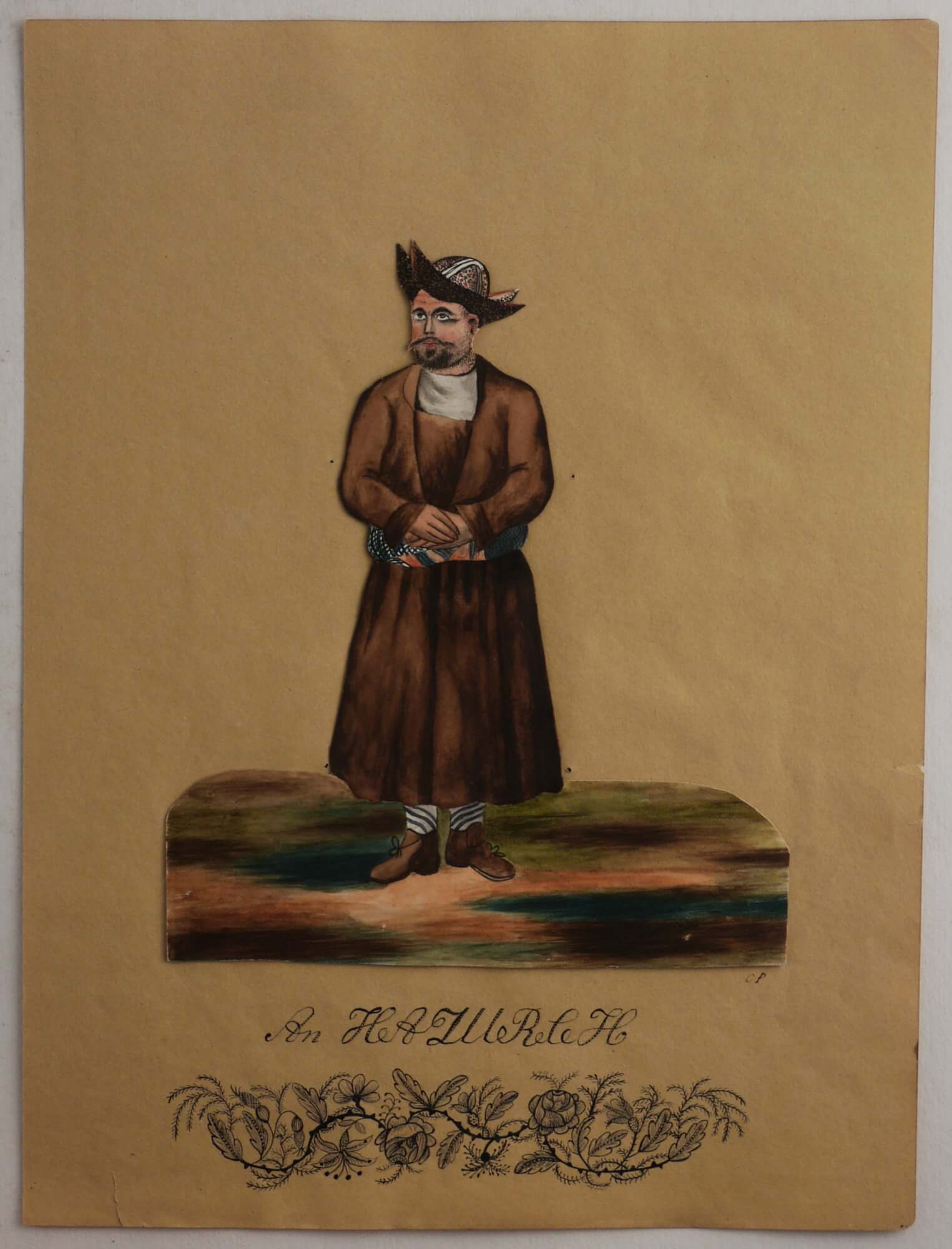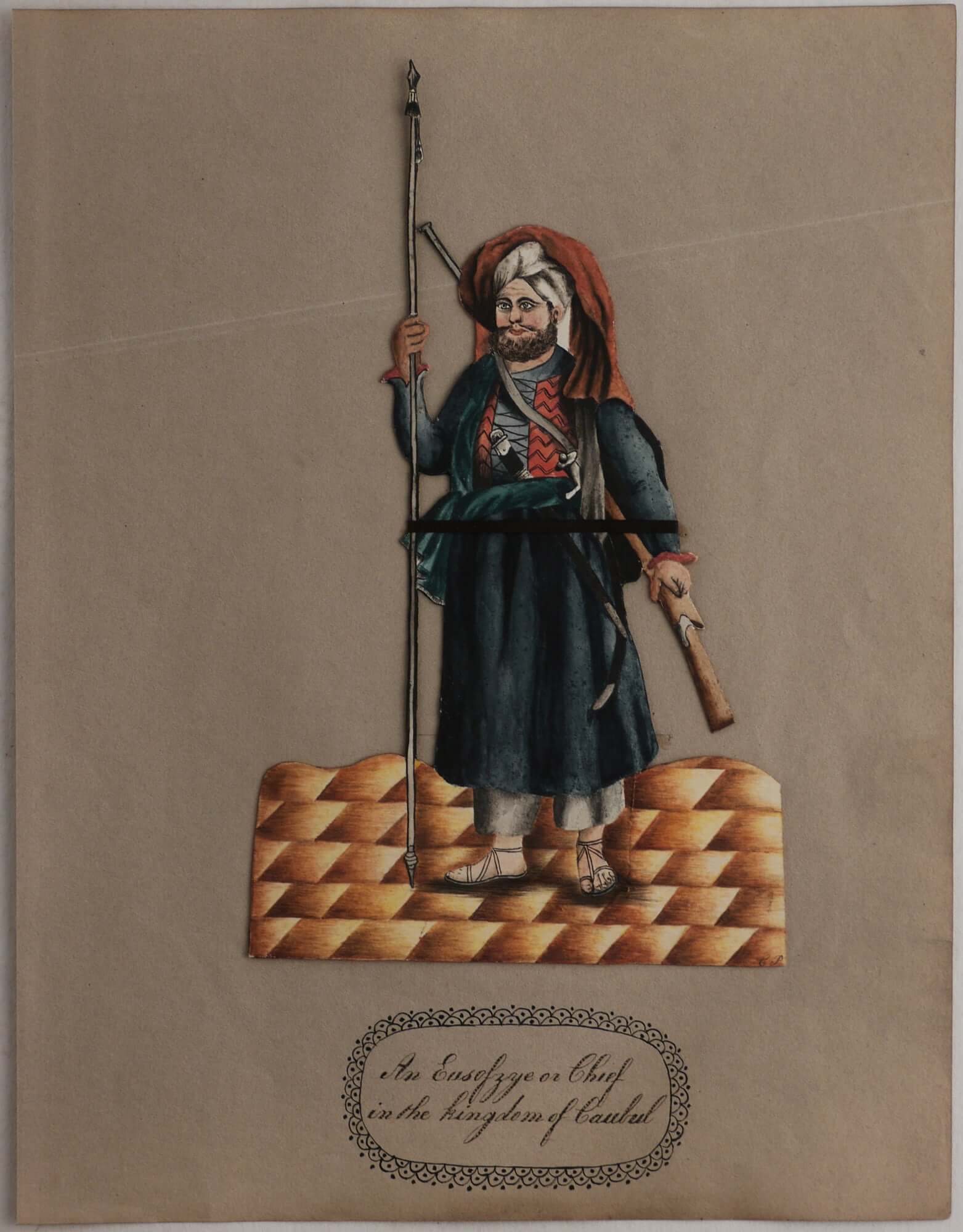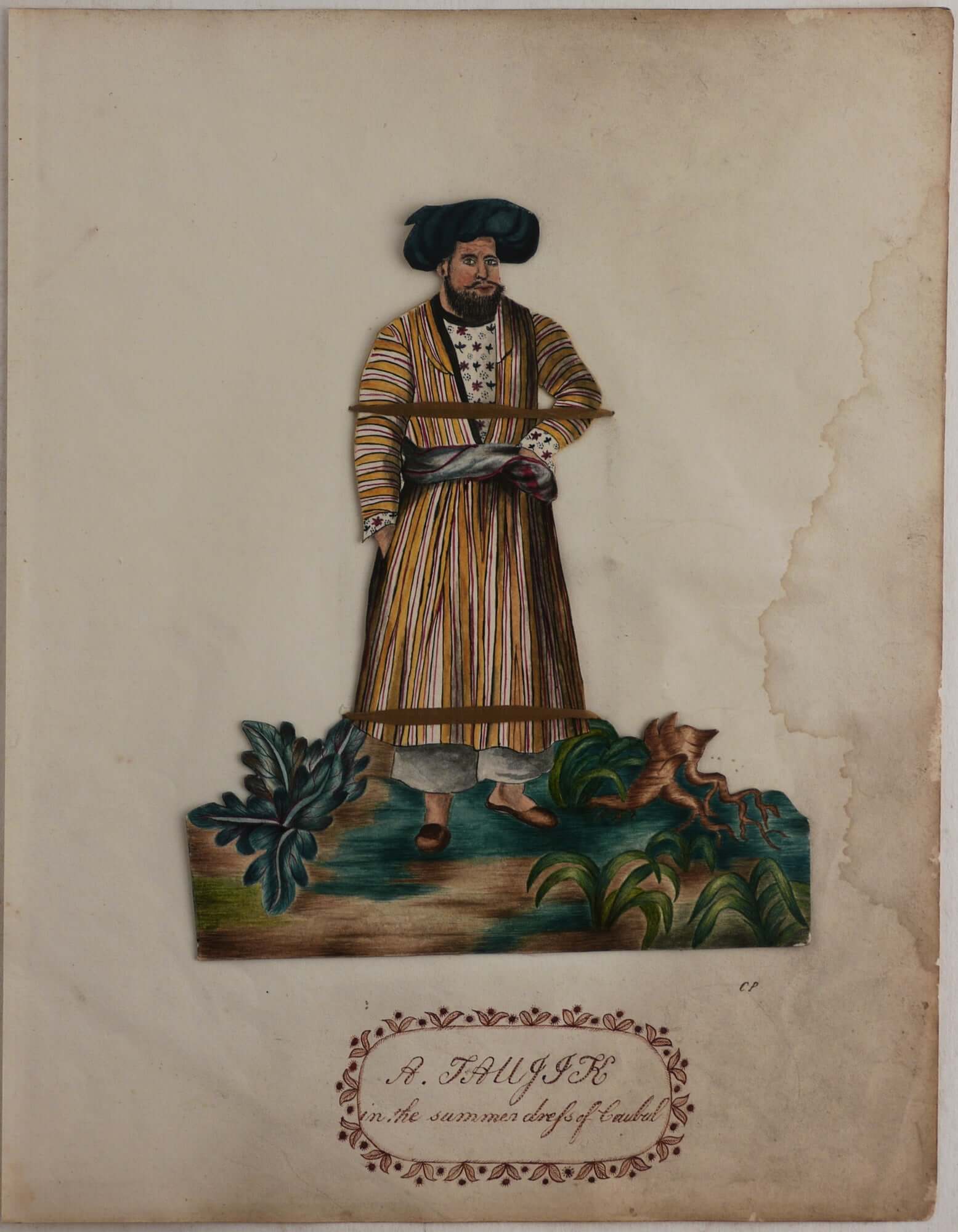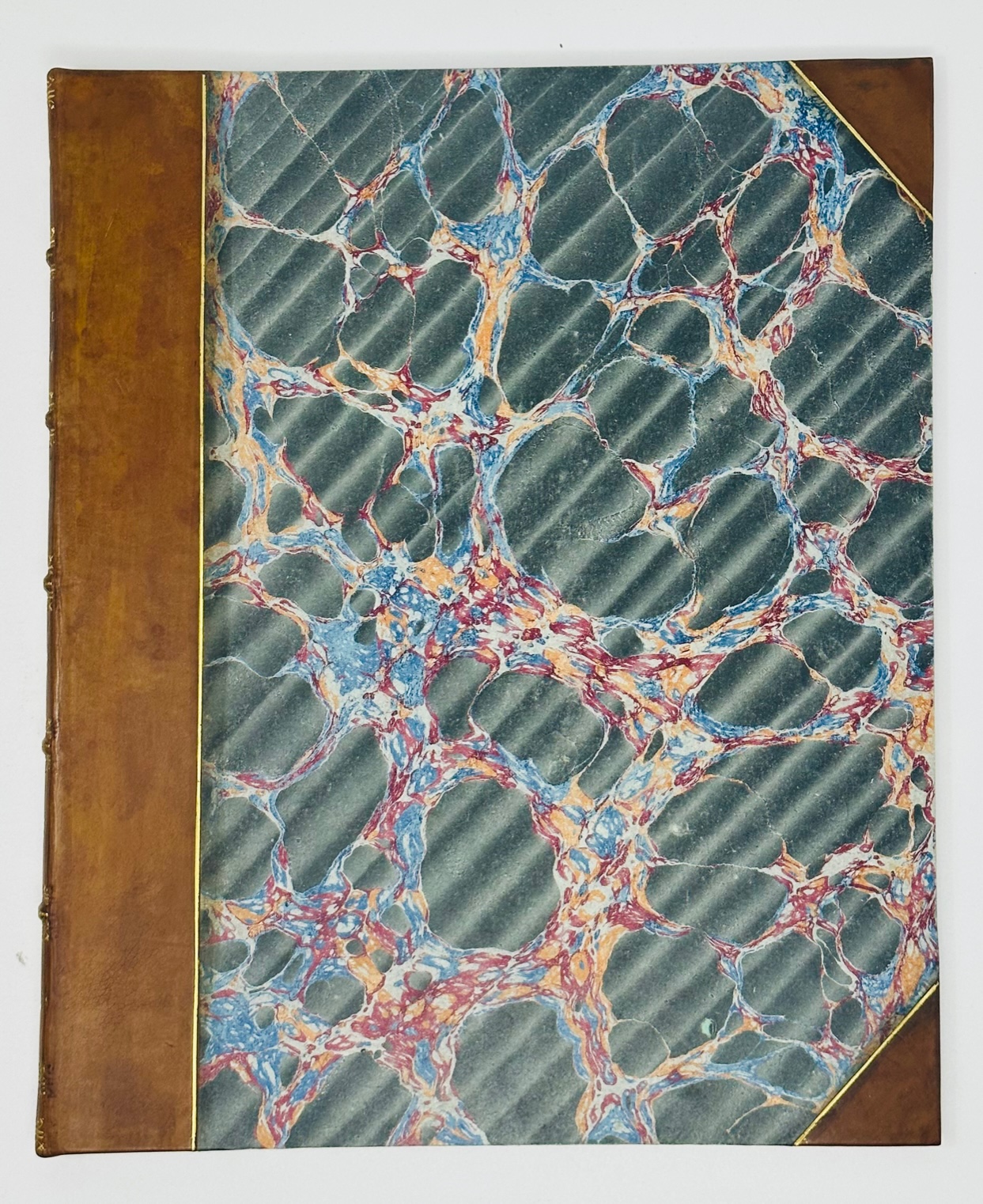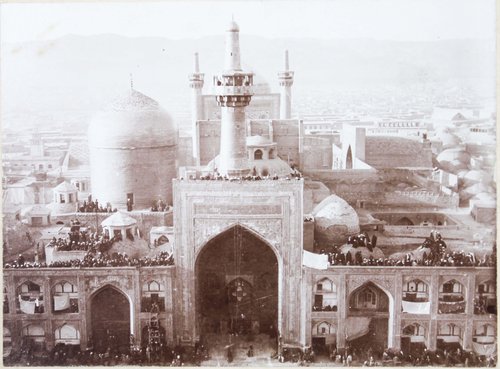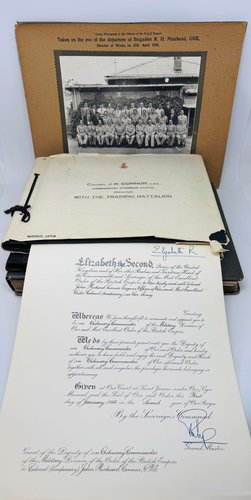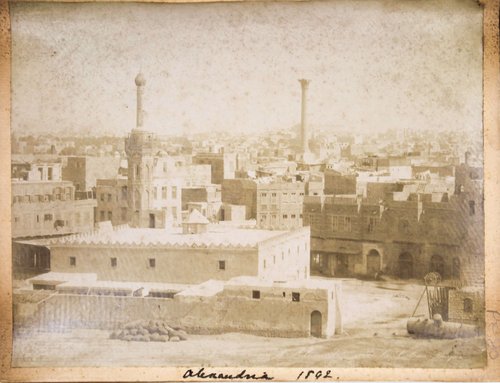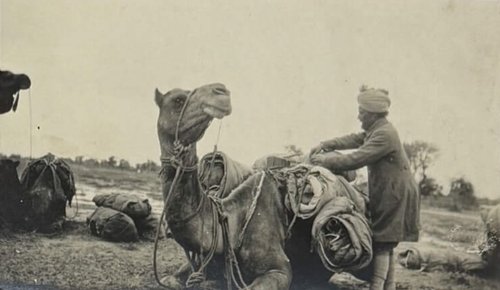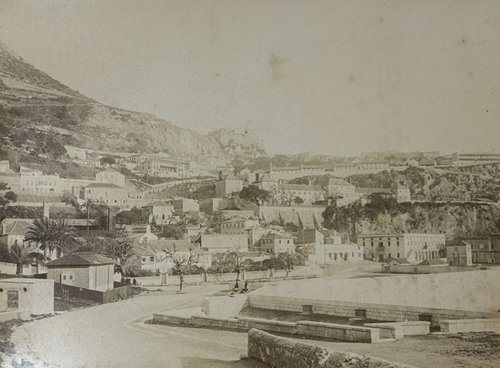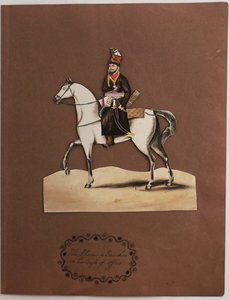
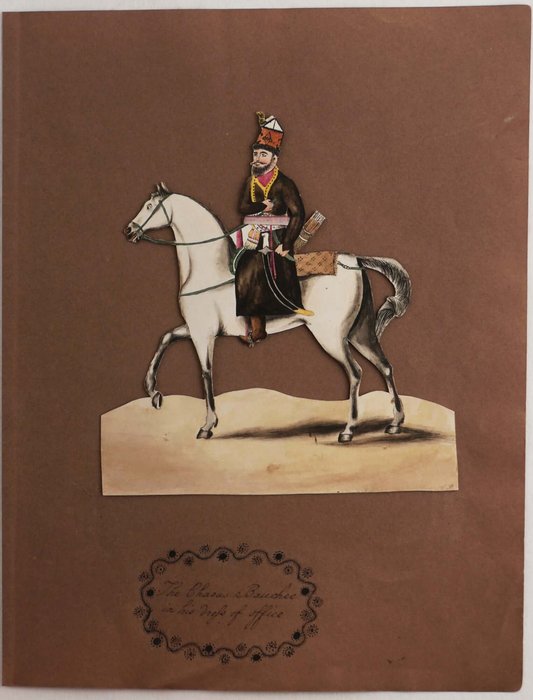
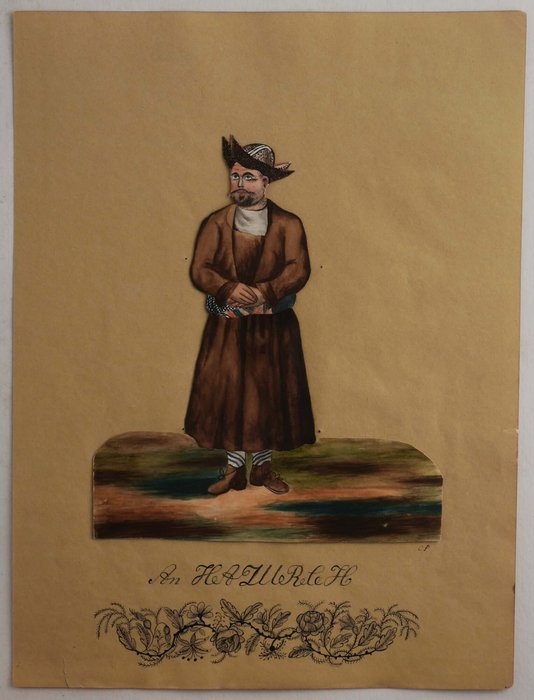
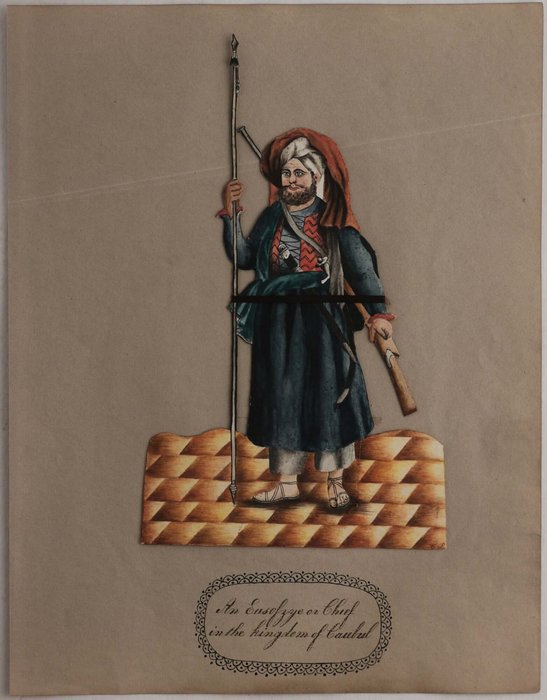
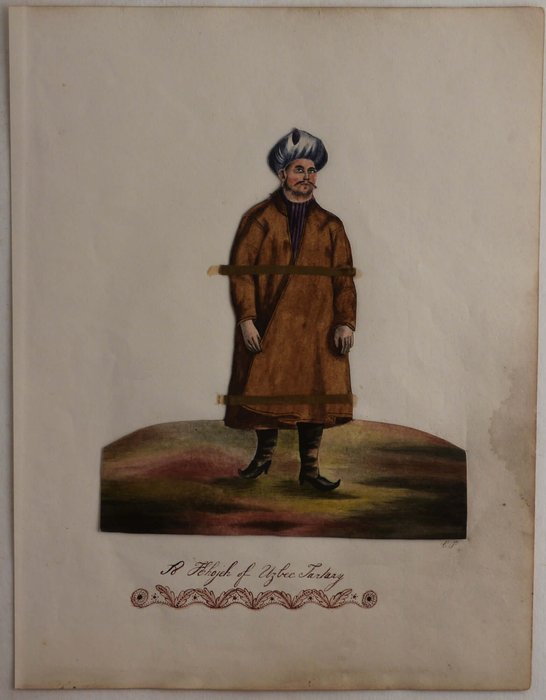
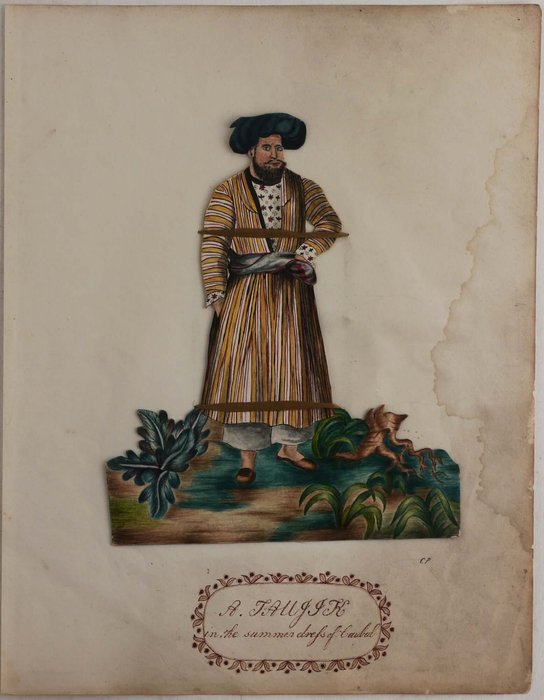
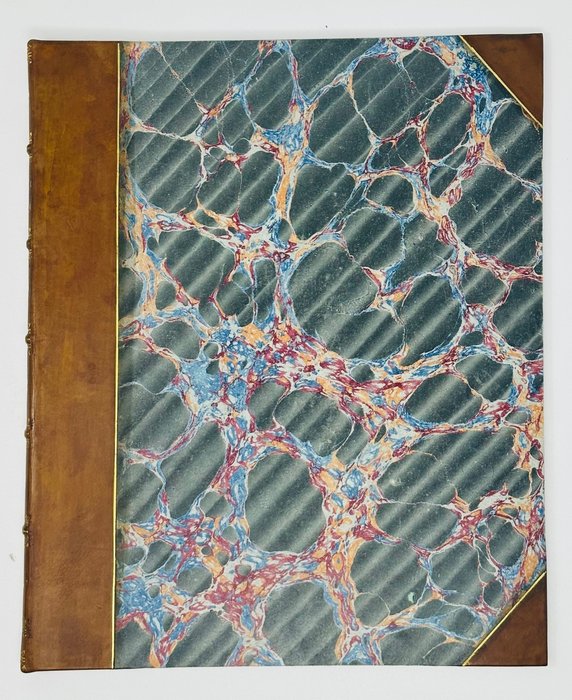
#M3
Ca. 1815
Five cut-out portraits drawn in ink, pencil and watercolour drawings each ca. 21 x 12.5 cm (8 ½ x 5 in.) or smaller, mounted on brown, beige or white leaves each ca. 28.5 x 22 cm (11 ¼ x 8 ½ in.). Two drawings are woven into their leaves with ribbons, two drawings have thin ribbons pasted on top. All are signed “CP” in period manuscript brown ink on drawing or leaves and titled in period manuscript black ink on the leaves, with hand-drawn embellishments in ink. Period style brown half calf album with gilt tooled spine and marbled paper boards. Two leaves have stains along fore-edge but overall a very good album of attractive watercolours.
This historically interesting album of Indian school portraits were perhaps used as the original archetype illustrations for the book by Montstuart Elphinstone (1779-1859) titled “An Account of the Kingdom of Caubul,” which was published in 1815. The preface of the book states that several of the illustrations (including the drawing of an Eusofzye in this collection) were drawn by Lieutenant R. M. Grindlay, while the rest of the illustrations were drawn by Indian artists. They show in great detail costumes of the Kingdom of Caubul and its dependencies (including Tartary) during the Durrani Dynasty (1747-1842). All but one of the drawings show portraits of people standing (one image shows the “Chaous Bauchee” on a horse), however all show clear depictions of dress, shoes, headwear and weapons.
Drawing Captions (book plate #'s of the corresponding plates in the Elphinstone's Caubul in brackets): An Hazurch (PL. XII); An Eusofzye or Chief in the kingdom of Caubul (Pl. VI) ; A Taujik in the summer dress of Caubul (PL. IV); A Khojeh of Uzbec Tartary (PL. X); The Chaous Bauchee in his drefs of office (PL. XIII).
“Elphinstone was appointed ambassador to the Afghan court of Cabul in 1808. He went on to serve as Governor of Bombay and ultimately was offered the Governor-Generalship of India, though he declined. "It is remarkable that a man so skeptical, retiring, unselfish and modest should be one of the chief founders of the Anglo-Indian empire" (DNB).
“The Durrani dynasty was founded in 1747 by Ahmad Shah Durrani at Kandahar, present Afghanistan. He united the different Pashtun tribes and created the Durrani Empire with his Baloch allies which included the most of present-day Pakistan, and the Kashmir and Punjab regions of present-day India. The Durrani dynasty was composed of ethnic Pashtuns and Baloch Durranis were replaced by the Barakzai dynasty during the early half of the 19th century.
Ahmad Shah and his descendants were from the Sadozai line of the Durranis (formerly known as Abdalis), making them the second Pashtun rulers of Kandahar after the Hotakis.[3] The Durranis were very notable in the second half of the 18th century mainly due to the leadership of Ahmad Shah Durrani.
In 1826, the kingdom was claimed by Dost Mohammad Khan but in 1839 Shujah Shah Durrani was re-installed with the help of British Indiaduring the First Anglo-Afghan War. In 1841 a local uprising resulted in the killing of the British resident and loss of mission in Kabul and the 1842 retreat from Kabul to Jalalabad.” (Wikipedia).


